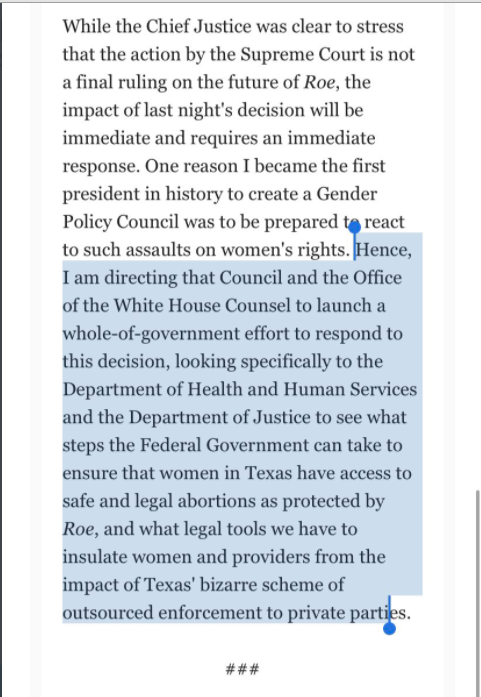It looks like you're using an Ad Blocker.
Please white-list or disable AboveTopSecret.com in your ad-blocking tool.
Thank you.
Some features of ATS will be disabled while you continue to use an ad-blocker.
share:
a reply to: Charliebrowndog
Yes, that was the video that Isaac Kappy shared. As an aside, how can that video be "debunked?" As if our eyes deceive us? Makes no sense.
For those that don't remember, Kappy also made a rather long video, a "music" video, where he called these people out by name and by deed shortly before he was killed. I didn't see the video until after his death, but he apparently had the goods on a lot of celebrities.
I don't remember the backstory of the video itself, but the video of the scantily clad young girls who all looked exactly the same (clones?) who were filling a tub with water from a fountain in some sort of temple, was first shared with the world by Isaac Kappy, who seems to have been killed by Tom Hanks.
Yes, that was the video that Isaac Kappy shared. As an aside, how can that video be "debunked?" As if our eyes deceive us? Makes no sense.
For those that don't remember, Kappy also made a rather long video, a "music" video, where he called these people out by name and by deed shortly before he was killed. I didn't see the video until after his death, but he apparently had the goods on a lot of celebrities.
I don't remember the backstory of the video itself, but the video of the scantily clad young girls who all looked exactly the same (clones?) who were filling a tub with water from a fountain in some sort of temple, was first shared with the world by Isaac Kappy, who seems to have been killed by Tom Hanks.
The Global Landscape on Vaccine ID
Passports Part 4: BLOCKCHAINED - The QR code - Sept 2, 2021
Banned Video . Com - The Mark of the Beast Has Arrived
Just Say NO
Soldiers Being Denied Religious Exemption And Threatened With 2 Years In Jail For Refusing COVID Shot
Let’s get right to it because there’s a lot to cover. Part 3 tackled the key implementers of the digital identity being assembled through the vaccine id passports, revealing the true agenda. Part 2 broke down the who, what, when, where, why, and how. It’s good to understand what’s at stake and who’s behind it, before diving into part 4. Blockchained will cover some of the most important aspects of this entire agenda against all of humanity.
This Report Details:
• The QR Code is About Your DATA, Your DNA, and Your BODY
• BLOCKCHAINED
• Wallets, Crypto, Central Bank Digital Currency (CBDC), and The Banks of The Future
• Artificial Intelligence and Augmented Humans
• Recap List of all Names and Organizations Covered in Parts 3 & 4
• Suggestions and Solutions....
Banned Video . Com - The Mark of the Beast Has Arrived
Just Say NO
Soldiers Being Denied Religious Exemption And Threatened With 2 Years In Jail For Refusing COVID Shot
edit on 922021 by MetalThunder because: (no reason given)
China to buy America on Sept. 15th.?
Congress approving 492 spending bills on Sept. 15th.
They are fused into one bill.
Into one piece of pork.
It is called: "S.Con.Res.14 - A concurrent resolution setting forth the congressional budget for the United States Government for fiscal year 2022 and setting forth the appropriate budgetary levels for fiscal years 2023 through 2031."
S.Con.Res.14 — 117th Congress (2021-2022)
Congress approving 492 spending bills on Sept. 15th.
They are fused into one bill.
Into one piece of pork.
It is called: "S.Con.Res.14 - A concurrent resolution setting forth the congressional budget for the United States Government for fiscal year 2022 and setting forth the appropriate budgetary levels for fiscal years 2023 through 2031."
S.Con.Res.14 — 117th Congress (2021-2022)
(5) PUBLIC DEBT.—Pursuant to section 301(a)(5) of the Congressional Budget Act of 1974 (2 U.S.C. 632(a)(5)), the appropriate levels of the public debt are as follows:
Fiscal year 2022: $30,789,000,000,000.
Fiscal year 2023: $32,141,000,000,000.
Fiscal year 2024: $33,526,000,000,000.
Fiscal year 2025: $35,059,000,000,000.
Fiscal year 2026: $36,570,000,000,000.
Fiscal year 2027: $37,952,000,000,000.
Fiscal year 2028: $39,733,000,000,000.
Fiscal year 2029: $41,296,000,000,000.
Fiscal year 2030: $43,188,000,000,000.
Fiscal year 2031: $45,150,000,000,000.
a reply to: PioneerFigureSkating
I was saying it was potentially being debunked as being related to some type of abuse or trafficking situation because there are reports it was footage of a family on vacation.
I can't say whether or not it is taking place with nefarious activities going on but that this video has had a history of claims that it is being used to identify something that it is not factually true, that is all.
The McAfee thing is weird. If it is a real thing why would they be pushing out video and pics that have been around the internet for awhile. If it is legit why wouldn't they release something new. If they have all these laptops my guess is there is a bunch to choose from. I want it to be true but with the release of regurgitated info by hopes fade a little.
I was saying it was potentially being debunked as being related to some type of abuse or trafficking situation because there are reports it was footage of a family on vacation.
I can't say whether or not it is taking place with nefarious activities going on but that this video has had a history of claims that it is being used to identify something that it is not factually true, that is all.
The McAfee thing is weird. If it is a real thing why would they be pushing out video and pics that have been around the internet for awhile. If it is legit why wouldn't they release something new. If they have all these laptops my guess is there is a bunch to choose from. I want it to be true but with the release of regurgitated info by hopes fade a little.

Nothing can stop Walrus of Justice.
Nothing.

There will be 💥💥💥BOOMS💥💥💥
Prepare for scary distractions.
Don't be fooled by engineered panix.
Fasten your safety belts

edit on 9 2 2021 by dashen because: Q
How it started. 2020

How it is going. 2021

Leaving all the the other evidence aside, I would think that this alone would prove to even the most resistant that this is not about health at all and never was.

How it is going. 2021

Leaving all the the other evidence aside, I would think that this alone would prove to even the most resistant that this is not about health at all and never was.
An excellent piece on the reasons why a growing number of people have abandoned their trust in the left.
Link if you want to read it: Why Don’t They Believe Us?
I started sending these types of articles to my family/friends that are still under the Covid spell. The shorter articles and snippets from longer articles that hit on target I print out and insert them into birthday & anniversary cards, event occasions. The more stubborn, argumentative one's I include a $50 bill or a dinner pass for two. I figure eventually they will read at least one. Best I can do.
Link if you want to read it: Why Don’t They Believe Us?
I started sending these types of articles to my family/friends that are still under the Covid spell. The shorter articles and snippets from longer articles that hit on target I print out and insert them into birthday & anniversary cards, event occasions. The more stubborn, argumentative one's I include a $50 bill or a dinner pass for two. I figure eventually they will read at least one. Best I can do.
originally posted by: EndtheMadnessNow
China to buy America on Sept. 15th.?
Congress approving 492 spending bills on Sept. 15th.
They are fused into one bill.
Into one piece of pork.
It is called: "S.Con.Res.14 - A concurrent resolution setting forth the congressional budget for the United States Government for fiscal year 2022 and setting forth the appropriate budgetary levels for fiscal years 2023 through 2031."
S.Con.Res.14 — 117th Congress (2021-2022)
(5) PUBLIC DEBT.—Pursuant to section 301(a)(5) of the Congressional Budget Act of 1974 (2 U.S.C. 632(a)(5)), the appropriate levels of the public debt are as follows:
Fiscal year 2022: $30,789,000,000,000.
Fiscal year 2023: $32,141,000,000,000.
Fiscal year 2024: $33,526,000,000,000.
Fiscal year 2025: $35,059,000,000,000.
Fiscal year 2026: $36,570,000,000,000.
Fiscal year 2027: $37,952,000,000,000.
Fiscal year 2028: $39,733,000,000,000.
Fiscal year 2029: $41,296,000,000,000.
Fiscal year 2030: $43,188,000,000,000.
Fiscal year 2031: $45,150,000,000,000.
30 to 45 is a whole lot of inflation, compounded interest spread across a multitude of platforms pretty much reduces the dollar to TP.
FED is the largest IMF division bank, the chief export of the US is The Dollar. The above numbers do not compute if one only has a woke military to impose taking dollars.
I can only assume this "reset" will remove the entire issue of the spending madness is because it does not matter. At least then we can put the "economists" in the gulag for good.
Back in the early 70's writer Larry Gelbart developed MASH for teeeveee. He said the execs insisted on a laugh track to tell folks when to laugh. He
said at the time they only had old recorded tracks from live Radio shows. He said "when you watch MASH the laughs are from long dead people." You'll
see where I am going with this.
Thread

We've covered this a lot here, that aborted children besides feeding some, are sold on the open market, and used in Meds, Jabs, Cosmetics and other products. The need to aborted kids his huge, so the supply needs to be steady.
But. Scrolling through the thread is this reply.
So. If this is correct, the Doritos flavor folks love so much is NOT because folks taste tested it and liked the seasonings, but because dead baby cells "tasted" and liked.
Which begs the question: What do dead babies know about food tasting that we who live and eat the actual "foods" created do not?
Bonus. PEPSI which used to have Senomyx, allegedly, is unique it seems
Thread

We've covered this a lot here, that aborted children besides feeding some, are sold on the open market, and used in Meds, Jabs, Cosmetics and other products. The need to aborted kids his huge, so the supply needs to be steady.
But. Scrolling through the thread is this reply.
As a long-time Pro-Life activist, my understanding is aborted infant cells Senomyx used were only used to test flavor-enhancing chemicals. The cells "reacted" to flavors, allowing specific flavor enhancers to be isolated to later be added to foods. Cells aren't in the foods.
So. If this is correct, the Doritos flavor folks love so much is NOT because folks taste tested it and liked the seasonings, but because dead baby cells "tasted" and liked.
Which begs the question: What do dead babies know about food tasting that we who live and eat the actual "foods" created do not?
Bonus. PEPSI which used to have Senomyx, allegedly, is unique it seems
edit on 2-9-2021 by crankyoldman because: (no reason given)
a reply to: Guyfriday
From my own perception... the higher vibrational stuff has to do with the vibrational patterns that we all emit from our thoughts and emotions. We are all emitting various patterns within a controlled frequency band. The theory goes that our consciousness projects this "simulated reality" based upon our current state of awareness. Our current awareness is limited due to the limited amount of data we are allowed to receive. Our energy patterns have been locked to the confines of the frequency band that generates this realm or matrix. Our brain power has been restricted, we've been cut off from the dormant parts of our DNA... in essence, we've been caged
The fear range of emotions emit a very different pattern than the bliss range of emotions. We can fluctuate between the different range of patterns but generally, collectively, we mostly exhibit emotions of fear... anger, sadness, depression, hopelessness, dispair, fatigue, confusion, lethargy, anxiety...etc...this is why they spread pandemics. Illness keeps us in a very depressed, weakened state. You can't fight when you're depressed and weak. You can't escape either
This is because of the negative feedback loops that create the cycles we live in. These cycles (patterns) become our cage. Our minds and bodies have been poisoned and saturated with toxins. Our systems are sick. Our spirits broken. It is very difficult to break out of these negative patterns when these patterns are deliberately and intentionally perpetrated by the Psychopaths in charge and the majority of humans have no awareness of it.
But what would happen if our bodies are no longer flooded with toxins and poisons. What if we are able to heal our bodies from illness and disease, what if we're able to heal our minds from trauma and ptsd. What if we no longer emit energy patterns of fear but instead we begin to emit patterns of faith, love, strength, courage, clarity, confidence, appreciation, compassion bliss...collectively, that would generate a whole new energetic pattern and shift us into a whole new frequency range of thoughts and emotions.
What if these changes would remove the shackles from our minds and open up our brain capacity. What if it would activate genes from the dormant (multidimensional) parts of our DNA and deactivate the genes connected to fear, stress and deformity. Would our new patterns project a new simulated reality? If humanity expands into our innate spiritual power does our world expand with us? Will our physical perception change as a result of this expanded awareness?
From my own perception... the higher vibrational stuff has to do with the vibrational patterns that we all emit from our thoughts and emotions. We are all emitting various patterns within a controlled frequency band. The theory goes that our consciousness projects this "simulated reality" based upon our current state of awareness. Our current awareness is limited due to the limited amount of data we are allowed to receive. Our energy patterns have been locked to the confines of the frequency band that generates this realm or matrix. Our brain power has been restricted, we've been cut off from the dormant parts of our DNA... in essence, we've been caged
The fear range of emotions emit a very different pattern than the bliss range of emotions. We can fluctuate between the different range of patterns but generally, collectively, we mostly exhibit emotions of fear... anger, sadness, depression, hopelessness, dispair, fatigue, confusion, lethargy, anxiety...etc...this is why they spread pandemics. Illness keeps us in a very depressed, weakened state. You can't fight when you're depressed and weak. You can't escape either
This is because of the negative feedback loops that create the cycles we live in. These cycles (patterns) become our cage. Our minds and bodies have been poisoned and saturated with toxins. Our systems are sick. Our spirits broken. It is very difficult to break out of these negative patterns when these patterns are deliberately and intentionally perpetrated by the Psychopaths in charge and the majority of humans have no awareness of it.
But what would happen if our bodies are no longer flooded with toxins and poisons. What if we are able to heal our bodies from illness and disease, what if we're able to heal our minds from trauma and ptsd. What if we no longer emit energy patterns of fear but instead we begin to emit patterns of faith, love, strength, courage, clarity, confidence, appreciation, compassion bliss...collectively, that would generate a whole new energetic pattern and shift us into a whole new frequency range of thoughts and emotions.
What if these changes would remove the shackles from our minds and open up our brain capacity. What if it would activate genes from the dormant (multidimensional) parts of our DNA and deactivate the genes connected to fear, stress and deformity. Would our new patterns project a new simulated reality? If humanity expands into our innate spiritual power does our world expand with us? Will our physical perception change as a result of this expanded awareness?
edit on 2-9-2021 by cherokeetroy because: (no reason given)
originally posted by: Charliebrowndog
a reply to: PioneerFigureSkating
I was saying it was potentially being debunked as being related to some type of abuse or trafficking situation because there are reports it was footage of a family on vacation.
I can't say whether or not it is taking place with nefarious activities going on but that this video has had a history of claims that it is being used to identify something that it is not factually true, that is all.
The McAfee thing is weird. If it is a real thing why would they be pushing out video and pics that have been around the internet for awhile. If it is legit why wouldn't they release something new. If they have all these laptops my guess is there is a bunch to choose from. I want it to be true but with the release of regurgitated info by hopes fade a little.
Yeah, I was following you on the debunked claims. I was just adding my .02 to the idea it was debunked.
As far as McAfee goes, I don't buy any of it. The McAfee stuff was being pushed by those Ingersoll Lockwood people. For awhile it seemed as if there were some back channel comms going on there between IL and whoever is running that McAfee Telegram account. Since the IL stuff is being pushed by the same folks who pushed the Austin Steinbart stuff, I no longer take them seriously. I believe the game there is to steer the Q research into a direction of their choosing, thereby keeping attention off things they don't want covered.
You also gotta figure that if that sort of stuff is happening on the Chans, it is also likely happening here as well. So I sorta look at anyone crossways who tries to tell us where we should be focusing our attention. I prefer the research to be organic and go where it wants. I don't need direction from anyone here and neither does anyone else.
PS, this obviously doesn't apply to you. I'm just speaking in generalities.
edit on 2-9-2021 by PioneerFigureSkating because: (no reason given)
Team Joe wrote this for him to mumble.
What I find hilarious is the fact that he formed a "gender" council which is predicated on the idea that there are no genders, then, in the SAME sentence, seems to indicate there are women in this world of no genders. Nothing panics them more then the drying up the conveyor belt of dead kids.

As an aside, isn't Presidential Candidate and MAGA Doxxer Castro from Texas? How's is war on Transgender Reproductive JUSTICE going in light of this assault on men not being able to have abortions or something.
It really would seem at this point that if any Politico opens their mouth it is nothing but feces coming out.
What I find hilarious is the fact that he formed a "gender" council which is predicated on the idea that there are no genders, then, in the SAME sentence, seems to indicate there are women in this world of no genders. Nothing panics them more then the drying up the conveyor belt of dead kids.

As an aside, isn't Presidential Candidate and MAGA Doxxer Castro from Texas? How's is war on Transgender Reproductive JUSTICE going in light of this assault on men not being able to have abortions or something.
It really would seem at this point that if any Politico opens their mouth it is nothing but feces coming out.
China will be our main partner, say Taliban
www.aa.com.tr...
Afghanistan: Drug Trade and Belt and Road
dissidentvoice.org...
Blockchain beyond cryptocurrency in the Belt and Road Initiative (BRI)
chinaglobalimpact.org...
Afghanistan and China's Digital Silk Road
hillman.substack.com...
China’s Digital Silk Road and the Global Digital Order
thediplomat.com...
From the World Economic Forum:
Could a Digital Silk Road solve the Belt and Road's sustainability problem?
www.weforum.org...
China will be our main partner and represents a great opportunity for us because it is ready to invest in our country and support reconstruction efforts,” Zabihullah Mujahid said in an interview published by Italian newspaper La Repubblica on Wednesday.
He said the Taliban value China’s Belt and Road Initiative as the project will revive the ancient Silk Road.
www.aa.com.tr...
Afghanistan: Drug Trade and Belt and Road
Both China and Russia have already indicated that they would help the new Taliban regime to gain stability and to develop towards a newly independent, sovereign state. Afghanistan’s border with China, only about 70 km wide, but it forms a crucial connection to China’s western most Province, the Xinjiang Uygur Autonomous Region. It is a vital pivot for China’s Belt and Road, or “One Belt One Road” – OBOR – also called the New Silk Road.
While transit routes already go through Pakistan to the Indian Ocean, an OBOR rail and road transit through Afghanistan would connect China directly with Iran, facilitating among other trade, hydrocarbon transport from Iran to China. OBOR would also be an effective development instrument for war destroyed Afghanistan. A reconstruction and economic development scheme for Afghanistan could bring Afghanistan back to a respected nation state — even through the Taliban.
dissidentvoice.org...
Blockchain beyond cryptocurrency in the Belt and Road Initiative (BRI)
The “Digital Silk Road” (DSR) was introduced in 2015 by an official Chinese government white paper, as a component of Beijing’s Belt and Road Initiative (BRI)
The DSR aims to improve digital connectivity through the development of the digital service sector, and accelerates technological progress including ‘computing, big data, Internet of Things, artificial intelligence, blockchain, and quantum computing.’ While widespread adoptions of the technology are yet to flourish, there has been a few emerging fields observed in the BRI.
chinaglobalimpact.org...
Afghanistan and China's Digital Silk Road
Changes are likely to extend beyond telephone and internet access. Taliban leaders could also enhance surveillance by deploying “safe city” systems and biometric checkpoints. They may have already gained access to existing biometric databases, such as fingerprints and iris scans. Chinese vendors have these capabilities, and facing greater scrutiny in Western markets, they are eager to find new customers.
In sum, China’s Belt and Road writ-large faces major obstacles. But its tech dimension, the Digital Silk Road, is likely to be pulled and pushed into Afghanistan.
hillman.substack.com...
China’s Digital Silk Road and the Global Digital Order
China’s Digital Silk Road (DSR) was launched in 2015 as a component of Beijing’s vast vision for global connectivity, the Belt and Road Initiative (BRI). Like the BRI, the DSR is not monolithic and involves many actors at all levels across the Chinese public and private sectors.
The DSR is far more than just an infrastructure project. For China, the DSR is a solution that engenders a less U.S.-centric and a more Sino-centric Asian and global digital order. China pursues this goal by enabling the opening of new markets for Chinese tech giants such as Alibaba, Tencent, and Huawei, and by strengthening the world’s digital connectivity with China.
thediplomat.com...
From the World Economic Forum:
Could a Digital Silk Road solve the Belt and Road's sustainability problem?
China’s Belt and Road Initiative (BRI) involves a trillion-dollar investment programme to enhance economic interconnectivity and facilitate development across Eurasia, East Africa and close to 100 partner countries.
Finally, the Digital Silk Road is critically important for a sustainable global economy because it helps to address one of the most fundamental challenges of the Fourth Industrial Revolution: providing basic internet access for more than 3 billion people, roughly half the world’s population, who still have no internet connectivity. While the digital economy is booming globally, the failure to narrow the digital divide could slow socioeconomic mobility and harden differences between the world’s haves and have-nots.
Furthermore, the Digital Silk Road brings a larger cyber market to entrepreneurs in emerging markets – an integrated digital environment that is both larger and more robust than existing systems, allowing innovators to test and commercialize ideas that originated in small, isolated markets. With that, there is real hope that lagging economies can leapfrog many of the barriers that have held them back and head directly into the AI-powered digital economy. The Digital Silk Road’s time has truly arrived.
www.weforum.org...
edit on 2-9-2021
by cherokeetroy because: (no reason given)
Australia Is 'Testing the Limits' Amid COVID, Testing 'Orwellian' New App To Track People: Report
ijr.com
One state in Australia is trying out a new way to curb the spread of COVID-19 by launching a new app designed to track residents to help enforce quarantine rules.
“International travel from Australia is only available if you are exempt or you have been granted an individual exemption,” the website adds.
“People in South Australia will be forced to download an app that combines facial recognition and geolocation. The state will text them at random times, and thereafter they will have 15 minutes to take a picture of their face in the location where they are supposed to be. Should they fail, the local police department will be sent to follow up in person. ‘We don’t tell them how often or when, on a random basis they have to reply within 15 minutes,’ Premier Steven Marshall explained. ‘I think every South Australian should feel pretty proud that we are the national pilot for the home-based quarantine app,'” Friedersdorf added.
ijr.com
edit on Thu Sep 2 2021 by DontTreadOnMe
because: attempt to fix BB code
a reply to: cherokeetroy
Gates Foundation helped 'raise China's voice of governance' in Africa, emails show
www.foxbusiness.com...
Gates Foundation helped 'raise China's voice of governance' in Africa, emails show
Microsoft founder Bill Gates' international foundation has helped the Chinese Communist government in various ways, according to a newly-released batch of emails from the National Institute of Allergy and Infectious Diseases under Dr. Anthony Fauci, obtained by Judicial Watch through a Freedom of Information Act request.
According to the emails, the Gates Foundation worked closely with the Chinese government to grease the skids to enable the sale of Chinese-produced medications outside the Middle Kingdom. The foundation also helped "raise China's voice of governance by placing representatives from China on important international counsels as high level commitment from China."
The newly-released emails include a September 5, 2017, report from Dr. Ping Chen, the NIAID representative in China. Chen told her colleagues that she "attended a ‘Belt and Road’ High Level Meeting for Health Cooperation: towards a Health Silk Road."
In the same report, Chen reported that she attended a joint meeting with the Gates Foundation, the United States Agency for International Development, the Centers for Disease Control and Prevention, and others "initially planned to talk about global Malaria eradication efforts." However, the group "ended talking in general Chinese policies and the foundation's current strategies in China – capacity building to help China raise its national standards and leverage China's resource to help others.
She mentioned that the Gates Foundation has provided funding for China's National Medical Products Administration (formerly known as China's Food and Drug Administration or FDA), in order to place experienced Chinese-Americans who had worked at the U.S. FDA for many years to work in China's equivalent agency.
Chen also noted that the Gates Foundation "is working with the Chinese government" on medical outreach to other countries, specifically in Africa.
"More specifically, it helps Chinese companies to gain pre-qualification on medications so that Chinese company manufactured drugs can be sold outside China, helps the Chinese to establish bilateral collaboration with specific countries in Africa, teaches the Chinese how to do resource mobilization, and helps raise China's voice of governance by placing representatives from China on important international counsels as high level commitment from China," Chen wrote of the Gates Foundation.
www.foxbusiness.com...
a reply to: cherokeetroy
I just love the idea of making the police run around looking for covid people! Not like there are actual crimes they could be dealing with. Shall we take bets on how long it takes for people to mess this system up? In my opinion it will not take very long.
I just love the idea of making the police run around looking for covid people! Not like there are actual crimes they could be dealing with. Shall we take bets on how long it takes for people to mess this system up? In my opinion it will not take very long.
FLASHBACK: John McCain said during Blinken's 2014 confirmation hearing for the deputy secretary of state position that he is "unqualified."
I'm pondering whether I'm going to continue archiving these threads and relevant links after this thread. I never expected this whole thing to go on
for this long and the thread seems to me to have drifted from Q in the sense that not many of the posts lately are directly related to Q posts. I
enjoy the conversation for the most part but when topics discussed are not connected to Q in any way that I can see, it now seems pointless to save
any of it. Maybe it's all of the CV19 posts recently which, to me, should be in a Covid thread unless connected to a Q drop in some way. Most things
that I bring to the thread I post because I know someone here is way better at digging and/or debunking than I am and because I value most of the
opinions here. It's very rare that I even offer an opinion on my own posts because I don't want to derail the topic at hand or seem like I am
attempting to "direct the thread". I will preserve the well over 200 gig of links and vids on a flash drive which also seems pointless but it's cheap
and easy to do and at least the past 4 years of archiving won't feel like a total waste of time. btw- I was finally able to view the remaining link
posted by the ghost of McAfee and included it below. Anyway, cheers to all and now back to deep lurk mode...

gateway.ethswarm.org...

gateway.ethswarm.org...
edit on 9/2/2021 by
OveRcuRrEnteD because: gateway.ethswarm.org...
a reply to: OveRcuRrEnteD
.... Being a Free Thinker that exercises intuition in an exercise of logical thinking, given Only clues and a lifetime of fake news and fake history ..., its a slippery slope
I Get IT though....
Your posts are appreciated

.... Being a Free Thinker that exercises intuition in an exercise of logical thinking, given Only clues and a lifetime of fake news and fake history ..., its a slippery slope
I Get IT though....
Your posts are appreciated

edit on 922021 by MetalThunder because: (no reason given)
new topics
-
School shooting in Madison Wi.
Social Issues and Civil Unrest: 4 hours ago -
Prisoner CNN helped free from Syrian prison was actually notorious Assad regime torturer: report
Mainstream News: 6 hours ago -
Labour Plotting to Postpone May's Council Elections ?
Regional Politics: 7 hours ago -
Is this really what is going on?
General Conspiracies: 8 hours ago -
Russias War Against Religion in Ukraine
World War Three: 8 hours ago -
iPhone Microphone Being Accessed by Unknown App
The Gray Area: 11 hours ago
top topics
-
iPhone Microphone Being Accessed by Unknown App
The Gray Area: 11 hours ago, 10 flags -
Is this really what is going on?
General Conspiracies: 8 hours ago, 10 flags -
Prisoner CNN helped free from Syrian prison was actually notorious Assad regime torturer: report
Mainstream News: 6 hours ago, 8 flags -
School shooting in Madison Wi.
Social Issues and Civil Unrest: 4 hours ago, 8 flags -
Democrats send letter to Biden urging him to ratify Equal Rights Amendment
US Political Madness: 17 hours ago, 4 flags -
Russias War Against Religion in Ukraine
World War Three: 8 hours ago, 4 flags -
Labour Plotting to Postpone May's Council Elections ?
Regional Politics: 7 hours ago, 3 flags
active topics
-
School shooting in Madison Wi.
Social Issues and Civil Unrest • 25 • : matafuchs -
Drones everywhere in New Jersey ---and Elsewhere Master Thread
Aliens and UFOs • 194 • : nugget1 -
ILLUMINATION – Reverse Perception Of Cyclic Probability – CEO ASSASSINATION
Secret Societies • 30 • : Compendium -
Prisoner CNN helped free from Syrian prison was actually notorious Assad regime torturer: report
Mainstream News • 3 • : BeyondKnowledge3 -
Russias War Against Religion in Ukraine
World War Three • 9 • : NorthOS -
Democrats send letter to Biden urging him to ratify Equal Rights Amendment
US Political Madness • 10 • : bluesman023 -
Is this really what is going on?
General Conspiracies • 41 • : fringeofthefringe -
Defending the need for adherence to Old Testament commandments under the new covenant of Christ
Conspiracies in Religions • 33 • : lilzazz -
-@TH3WH17ERABB17- -Q- ---TIME TO SHOW THE WORLD--- -Part- --44--
Dissecting Disinformation • 3719 • : Thoughtful3 -
iPhone Microphone Being Accessed by Unknown App
The Gray Area • 2 • : VictorVonDoom







